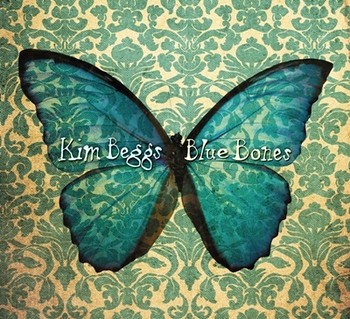
The image above is by Theo Booth. To see more of his work and order prints, go here
I feel terrible, I just want you to know.
I feel terrible, I just want you to know.
My baby done left, with that no good so and so.
For outsiders, the verse above sums up the blues. That’s all there is, and they’re ready to move on to something else. That’s too bad, because they are missing one of the great musical forms. That verse, (which I made up, if you’re wondering), fits neatly into twelve bars of music. It expresses the singer’s misery. And the structure provides plenty of room for aimless soloing on screaming guitars. Unfortunately, there is far too much blues in the marketplace that never gets beyond that. But the history of the blues provides great riches, and there are some artists out there today who understand that, and are furthering the tradition in meaningful ways. Let’s look at some blues pioneers, and enjoy the richness of the blues.
Lightning Hopkins: I‘m a Crawling Black Snake
[purchase]
The rigid form of the blues developed in the years after World War II. Older blues is more loosely structured. When Lightning Hopkins played solo on his acoustic guitar, he would suspend time and play these little runs that ignored the song’s structure altogether. But he would always find his way back, and it was never just for show. This suspension of time has made his music a favorite among jazz musicians I’m a Crawling Black Snake is a fine example of what I mean.
Ruth Brown and Johnny Adams: I Don‘t Know
[purchase]
I Don’t Know is a happy, teasing song. It also swings. Most versions I have heard are sung solo, usually by a male singer. Ruth Brown and Johnny Adams perform it here as a duet, and it really brings out the playfulness of the song.
Jimmy Witherspoon: Corina, Corina
[purchase]
Here is a blues song with no guitars. Jimmy Witherspoon started singing the blues with big bands. After World War II, the bands shrank, and the music started to change. Witherspoon kept up, and became one of the best jazz-blues singers of the postwar era. Here we hear him with a small group led by Ben Webster.
Slim Harpo: I‘m a King Bee
[purchase]
I’m a King Bee is a perfect example of the Chicago blues style that developed after WWII. This is the style that most influenced the British Invasion rockers of the 60s. No one showed that influence more than the Rolling Stones. The Stones recorded a version of I’m a King Bee on one of their early albums.
Spotlight Song of the Week:
Kim Beggs: Longest Dream
[purchase]
Kim Beggs plays and sings country music like they did in the old days. The arrangements are mostly acoustic, and nicely understated. Beggs knows that the songs don’t need a heavy hand to work. She sings in a wonderfully sweet soprano, and this brings a beautiful tenderness to all of the songs here. There are four covers on the album, and each is a marvel. But I wanted to feature an original song, and Longest Dream is here because I felt It was one of Beggs’ best lyrics. A woman stands by her man as he lays on his death bed. Beggs presents his state of mind, grateful for her faithfulness, anxious about the end, hopeful for the afterlife. Beggs sketches all of this in with very few words. It’s a beautiful example of her artistry, one of many here.






2 comments:
I enjoyed every single song in this post, yay! Plus the artist, and I wish I were rich and could buy some of his stuff, cuz I really like it. Thanks for linking.
I was familiar with the older artists but appreciated the country blues of Kim Beggs.
Thank you for sharing. It's such a challenge to find ~new~ music.
Best!
v
ps. here via Geoviki =)
Post a Comment